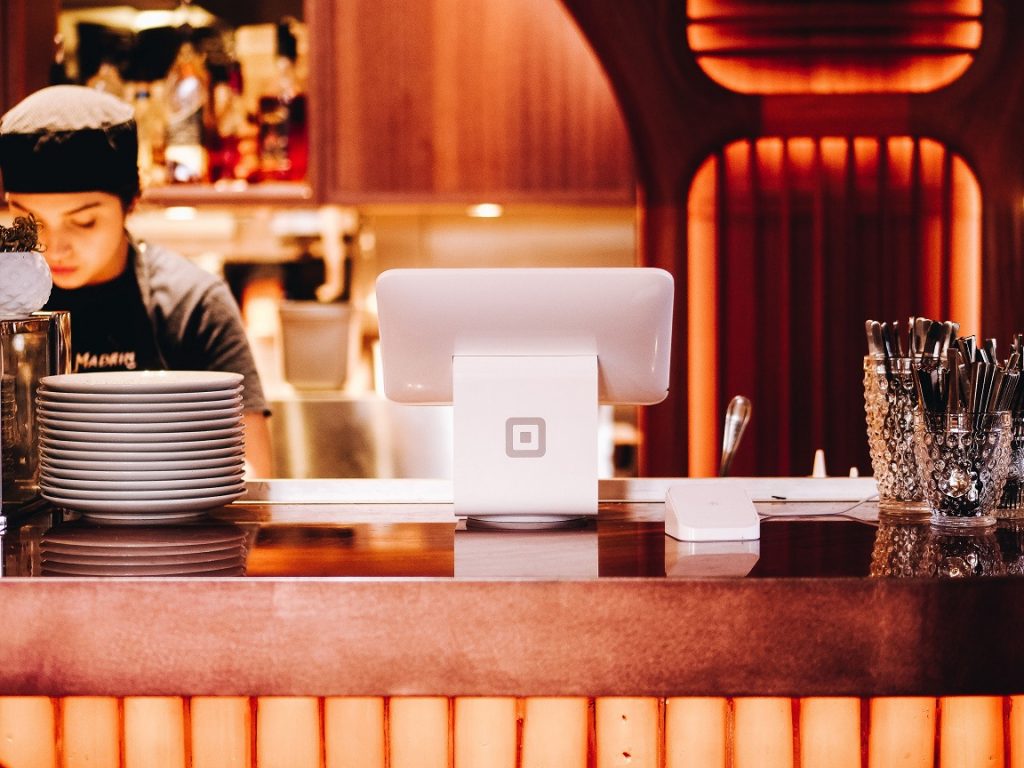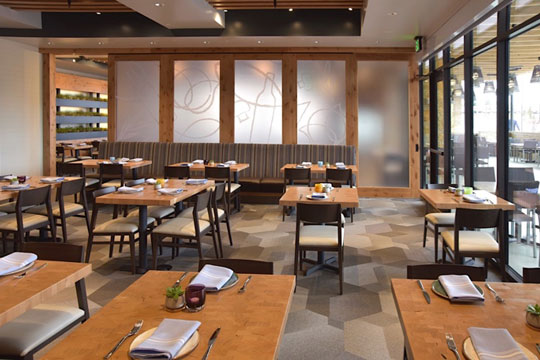Savor Authentic Eastern Food With a Pan-Asian Spin for a Culinary Experience
Embarking on a cooking trip with authentic Asian food, improved with a Pan-Asian spin, offers a special possibility to discover the abundant tapestry of flavors that specify the region's varied cooking practices. This experience welcomes you to savor the splendid balance of tastes-- wonderful, salty, spicy, and sour-- balanced by aromatic natural herbs and spices. Visualize the ingenious combination of Thai curry and ramen or the unanticipated delight of sushi burritos. As you consider these enticing dishes, think about the cultural narratives and historic influences that shape them, each bite using a story waiting to be discovered.

Exploring Pan-Asian Tastes
In the realm of worldwide gastronomy, Pan-Asian cuisine attracts attention for its remarkable diversity and the harmonious interplay of tastes from numerous Asian societies. This culinary strategy celebrates the special components and rich traditions found throughout the continent, producing a tapestry of preferences that is both gratifying and interesting. Secret to Pan-Asian cuisine is its capability to stabilize different flavors-- sweet, salted, spicy, and sour-- while highlighting the freshness and top quality of each ingredient.
From the umami-rich soy sauce of Japan to the fiery chili peppers of Thailand, Pan-Asian cuisine supplies a substantial scheme of flavors. These aspects are often incorporated in innovative means, boosting meals with layers of intricacy. For circumstances, making use of aromatic herbs such as lemongrass and cilantro, typical in Vietnamese and Thai cuisine, includes a rejuvenating illumination to dishes, while the consolidation of coconut milk delivers a creamy, rich appearance.
The emphasis on fresh fruit and vegetables and aromatic flavors makes sure that each meal is not just a feast for the preference buds however likewise for the senses. Pan-Asian food welcomes diners to begin on a cooking trip, checking out the vast and differed landscapes of Asian gastronomy with every bite.
Combination Dishes to Attempt
While Pan-Asian food is celebrated for its typical flavors, the modern-day cooking landscape is significantly embracing fusion dishes that blend these classic elements with impacts from various other regions. This cutting-edge method not just honors the rich heritage of Oriental cookeries but also introduces novel preference experiences that appeal to modern tastes.
An archetype of such a blend meal is the Korean-Mexican taco, where seasoned bulgogi beef is covered in a cozy tortilla, covered with kimchi and a hot gochujang-infused salsa. This mix weds the strong, mouthwatering flavors of Korea with the dynamic, fresh aspects of Mexican food. In a similar way, sushi burritos have gotten popularity, joining together the fragile creativity of Japanese sushi with the hearty, hand-held ease of a burrito, typically including combination ingredients like tempura shrimp and avocado with a drizzle of wasabi mayo.
One more notable recipe is Thai curry ramen, which instills the creamy, fragrant spices of Thai curry into the comforting broth of typical Japanese ramen, creating an unified blend that entices the detects. These blend recipes extend beyond mere novelty; they represent a culinary discussion in between societies, motivating expedition and advancement worldwide of Pan-Asian food.
Essential Active Ingredients and Flavors
To really value Pan-Asian food, one must comprehend the vital active ingredients and spices that create its foundation. This varied cooking style draws from an abundant tapestry of Eastern practices, utilizing an unified mix of appearances and tastes. Key components consist of soy sauce, fish sauce, and oyster sauce, which give a full-flavored umami deepness vital to Asian meals. Complementary to these are rice vinegar and mirin, offering a delicate level of acidity and sweet taste.
Aromatic components are essential, with ginger, garlic, and lemongrass being ubiquitous across different Pan-Asian recipes. These active ingredients give a great smelling base that boosts the complexity of tastes. Seasonings such as star anise, cardamom, and cinnamon introduce heat and personality, echoing influences from regions like China and India.

Food Preparation Strategies and Tips
Understanding the art of Pan-Asian food requires experience with its distinct food preparation techniques, each adding to the vibrant tapestry of tastes this cooking custom is commemorated for. Central to these approaches is the stir-fry, a quick food preparation technique that maintains the nutritional integrity and vivid colors of ingredients. Making use of a wok, the stir-fry technique enables also warm circulation, vital for accomplishing the particular appearance and taste balance of Pan-Asian meals.
One more essential technique is steaming, especially widespread in Chinese cuisine. This mild technique keeps the all-natural tastes and nutrients of components, making it suitable for seafood and veggies. Dumplings, a precious staple, frequently benefit from steaming, leading to soft, succulent textures.
Barbecuing, likewise important, passes on smoky depths to meals such as Oriental bulgogi or Japanese yakitori (best asian restaurant Islamabad). This method frequently entails marinating active ingredients, enabling tastes to permeate deeply before cooking over an open flame or warmer
Lastly, mastering the art of balancing flavors-- pleasant, sour, salted, bitter, and umami-- is critical. Correctly layering these elements can raise a dish from common to extraordinary, offering a facility and satisfying cooking experience that embodies the significance of Pan-Asian cuisine.
Dining Experiences Worldwide
Across the globe, Pan-Asian food supplies an unmatched eating experience, celebrated for its abundant tapestry of flavors and vibrant discussions. This cooking phenomenon has actually gone beyond social limits, catching the hearts and tastes of food lovers worldwide. In worldwide cities like New York, London, and Sydney, Pan-Asian restaurants act as melting pots where culinary customs from Thailand, Japan, China, and past merge, giving diners with a diverse mix of dishes that highlight the region's diversity.
The global charm of Pan-Asian cuisine depends on its capability to offer both authenticity and development. Chefs masterfully wed conventional components such as lemongrass, soy sauce, and miso with contemporary methods, leading to meals that are both familiar and refreshingly new. This blend allows diners to embark on a cooking journey that appreciates heritage while embracing modernity.
In addition, eating experiences are boosted why not try these out with thoughtfully developed atmospheres that reflect the principles of Pan-Asian visual appeals. From minimal Japanese-inspired interiors to vibrant Thai-themed spaces, each restaurant offers a special atmosphere that enhances the cooking offerings. As an outcome, patrons are not just consuming a dish however partaking in a cultural experience, making Pan-Asian eating a truly visit this web-site global phenomenon.
Verdict
The exploration of Pan-Asian food uses a profound understanding of the complex interplay of tastes and culinary customs across Asia. By accepting fusion recipes such as Thai curry ramen and sushi burritos, the culinary trip not only highlights the versatility of traditional ingredients but additionally showcases innovative contemporary techniques. This gastronomic journey, enriched by cooking techniques and important seasonings, gives a special chance to value the social diversity and culinary virtuosity that specify Pan-Asian food on an international scale.
Embarking on a cooking trip with authentic Oriental food, boosted with a Pan-Asian twist, provides a special possibility to explore the abundant tapestry of flavors that specify the area's varied cooking customs.In the world of international gastronomy, Pan-Asian food stands out for its amazing diversity and the unified interaction of tastes from different Oriental societies. Key to Pan-Asian cuisine is its capability to balance contrasting flavors-- sweet, salted, spicy, and sour-- while highlighting the quality and quality of each ingredient.

 Tia Carrere Then & Now!
Tia Carrere Then & Now! Seth Green Then & Now!
Seth Green Then & Now! Danica McKellar Then & Now!
Danica McKellar Then & Now! Erik von Detten Then & Now!
Erik von Detten Then & Now! Karyn Parsons Then & Now!
Karyn Parsons Then & Now!